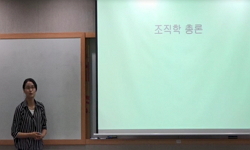Isolated microspore culture experiments were carried out in sweet pepper (Capsicum annuum L.) F1hybrid genotypes. In the first experiment, four culture media (W14, B5, MS and NLN) were compared to test their effectiveness in inducing the formation of ...
http://chineseinput.net/에서 pinyin(병음)방식으로 중국어를 변환할 수 있습니다.
변환된 중국어를 복사하여 사용하시면 됩니다.
- 中文 을 입력하시려면 zhongwen을 입력하시고 space를누르시면됩니다.
- 北京 을 입력하시려면 beijing을 입력하시고 space를 누르시면 됩니다.
https://www.riss.kr/link?id=A104492901
-
저자
Csaba Lantos (Cereal Research Non-Profit Company) ; Aniko´ Ge´mes Juhasz (Medimat Ltd.) ; Pa´l Va´gi (Eo¨tvo¨s Lora´nd University) ; Ro´bert Miha´ly (Cereal Research Non-Profit Company) ; Zolta´n Kristo´f (Eo¨tvo¨s Lora´nd University) ; Ja´nos Pauk (Cereal Research Non-Profit Company)
- 발행기관
- 학술지명
- 권호사항
-
발행연도
2012
-
작성언어
English
- 주제어
-
등재정보
KCI등재,SCOPUS,SCIE
-
자료형태
학술저널
-
수록면
123-132(10쪽)
-
KCI 피인용횟수
10
- 제공처
-
0
상세조회 -
0
다운로드
부가정보
다국어 초록 (Multilingual Abstract)
Isolated microspore culture experiments were carried out in sweet pepper (Capsicum annuum L.) F1hybrid genotypes. In the first experiment, four culture media (W14, B5, MS and NLN) were compared to test their effectiveness in inducing the formation of microsporederived structures in two genotypes. The experiments revealed the superiority of B5 medium. In the second experiment, the effects of different ratios of 2,4-dichlorophenoxyacetic acid (2,4-D) (0, 0.1, 0.2 and 0.5 mg l-1) and kinetin (0, 0.2 and 0.5 mg l-1) were also investigated in B5medium with two genotypes. The effect of growth regulators were investigated on the production of microsporederived calli and embryo-like structures (ELSs), the ratio of the two and plant regeneration (number of regenerated plantlets) in microspore culture. The histological experiments revealed the differences between the microsporederived ELSs and calli. The most promising results were obtained on the investigated parameters in the presence of 0.1 mg l-1 2,4-D and 0.2 mg l-1 kinetin producing the highest number of plantlets in both genotypes tested. In the response of 11 genotypes, the androgenesis induction was successful in each sweet pepper genotypes tested using the best basic medium and growth regulators combination.
In case of 11 genotypes, the number of ELSs ranged from 20 to 100/Petri dish (an average of 48.1 ELS/Petri dish),while the number of green plantlets varied from 0 to 8plantlets/Petri dish (an average of 1.5 plantlets/Petri dish)depending on the genotype. The spontaneous rediploidization rate obtained was 25% in isolated microspore.
참고문헌 (Reference)
1 Pauk J, "Tradition. Quality and biotechnology in Hungarian spice pepper (Capsicum annuum L.) breeding" 58 : 259-266, 2010
2 Wang YY, "The induction of the pollen plantlets of triticale and Capsicum annuum from anther culture" 16 : 147-151, 1973
3 Supena EDJ, "Successful development of a shed-microspore culture protocol for doubled haploid production in Indonesian hot pepper (Capsicum annuum L.)" 25 : 1-10, 2006
4 Touraev A, "Stress-induced microspore embryogenesis in tobacco: an optimized system for molecular studies" 15 : 561-565, 1996
5 Steinitz B, "Regeneration in vitro and genetic transformation of pepper (Capsicum spp.). The current state of art" 18 : 9-15, 1999
6 Ge´mes Juha´sz A, "Production of doubled haploid breeding lines in case of paprika, eggplant, cucumber, zucchini and onion" 725 : 845-854, 2006
7 Horner M, "Pollen dimorphism—origin and significance in pollen plant formation by anther culture" 42 : 763-771, 1978
8 Steinitz B, "Pepper(Capsicum annuum L.) regenerants obtained by direct somaticembryogenesis fail to develop a shoot" 39 : 296-303, 2003
9 Csille´ry G, "Pepper taxonomy and the botanical description of the species" 54 : 151-166, 2006
10 Kim M, "Origin of multicellular pollen and pollen embryos in cultured anthers of pepper (Capsicum annuum L.)" 77 : 63-72, 2004
1 Pauk J, "Tradition. Quality and biotechnology in Hungarian spice pepper (Capsicum annuum L.) breeding" 58 : 259-266, 2010
2 Wang YY, "The induction of the pollen plantlets of triticale and Capsicum annuum from anther culture" 16 : 147-151, 1973
3 Supena EDJ, "Successful development of a shed-microspore culture protocol for doubled haploid production in Indonesian hot pepper (Capsicum annuum L.)" 25 : 1-10, 2006
4 Touraev A, "Stress-induced microspore embryogenesis in tobacco: an optimized system for molecular studies" 15 : 561-565, 1996
5 Steinitz B, "Regeneration in vitro and genetic transformation of pepper (Capsicum spp.). The current state of art" 18 : 9-15, 1999
6 Ge´mes Juha´sz A, "Production of doubled haploid breeding lines in case of paprika, eggplant, cucumber, zucchini and onion" 725 : 845-854, 2006
7 Horner M, "Pollen dimorphism—origin and significance in pollen plant formation by anther culture" 42 : 763-771, 1978
8 Steinitz B, "Pepper(Capsicum annuum L.) regenerants obtained by direct somaticembryogenesis fail to develop a shoot" 39 : 296-303, 2003
9 Csille´ry G, "Pepper taxonomy and the botanical description of the species" 54 : 151-166, 2006
10 Kim M, "Origin of multicellular pollen and pollen embryos in cultured anthers of pepper (Capsicum annuum L.)" 77 : 63-72, 2004
11 Sibi M, "Obtention de plantes haploı¨des par androgenese in vitro chez le piment(Capsicum annuum L.)" 29 : 583-606, 1979
12 Gamborg OL, "Nutrient requirements of suspension cultures of soybean root cells" 20 : 151-158, 1968
13 Ge´mes Juha´sz A, "New perspective: microspore culture as new tool in paprika breeding" 377-381, 2010
14 Kuo JS, "Investigation on the anther culture in vitro of Nicotiana tabacum L. and Capsicum annuum L" 15 : 43-47, 1973
15 Lichter R, "Induction of haploid plants from isolated pollen of Brassica napus" 105 : 427-434, 1982
16 Jedrzejczyk I, "In vivo polyembryony induction in species of Capsicum" 51 : 55-60, 2009
17 Heberle-Bors E, "In vitro pollen embryogenesis in Nicotiana tabacum L. and its relation to pollen sterility, sex balance and floral induction of the pollen donor plants" 156 : 396-401, 1982
18 Ochoa-Alejo N, "In vitro chilli pepper biotechnology" 37 : 701-729, 2001
19 Ge´mesne´ Juha´sz A, "In vitro anther and isolated microspore culture as tools in sweet and spice pepper breeding" 829 : 423-431, 2009
20 Lantos C, "Improvement of isolated microspore culture of pepper (Capsicum annuum L.) via co-culture with ovary tissues of pepper or wheat" 97 (97): 285-293, 2009
21 Mityko´ J, "Improvement in the haploid technique routinely used for breeding sweet and spice pepper in Hungary" 54 : 203-219, 2006
22 George L, "Haploid Capsicum through experimental androgenesis" 78 : 467-470, 1973
23 Harms CT, "Fractionation of plant protoplast types iso-osmotic density gradient centrifugation" 53 : 57-63, 1978
24 Supena EDJ, "Evaluation of crucial factors for implementing shed-microspore culture of Indonesian hot pepper (Capsicum annuum L.) cultivars" 107 : 226-232, 2006
25 Parra-Vega V, "Establishment of isolated microspore cultures in pepper of the California and Lamuyo types, In Advances in genetics and breeding of Capsicum and eggplant" UPV Press 411-415, 2010
26 Mordhorst AP, "Embryogenesis and development of isolated barley (Hordeum vulgare L.) microspores are influenced by the amount of nitrogen sources in culture media" 142 : 485-492, 1993
27 Kim M, "Embryogenenesis and plant regeneration of hot pepper (Capsicum annuum L.) through isolated microspore culture" 27 : 425-434, 2008
28 Kristiansen K, "Effect of donor plant-temperature, photoperiod, and age on anther culture response of Capsicum annuum L" 67 : 105-109, 1993
29 Thomas WTB, "Doubled haploids in breeding, In Doubled haploid production in crop plants. A manual" Kluwer 95-102, 2003
30 Gyulai G, "Doubled haploid development ad PCR analysis of F-1 hybrid derived DHR- 2 paprika (Capsicum annuum L.) lines" 156 : 168-174, 2000
31 Dumas de Vaulx R, "Culture in vitro d’antheres du piment (Capsicum annuum L.): ame´lior des taux d’obtention de plantes chezdiffe´rents ge´notypes par des traitments r´? 35 C" 1 : 859-864, 1981
32 Simonne AH, "Ascorbic acid and provitamin A contents in unusuallycolored bell peppers (Capsicum annuum L.)" 10 : 299-311, 1997
33 Mityko´ J, "Anther-culture response in different genotypes and F1 hybrids of pepper (Capsicum annuum L.)" 114 : 78-80, 1995
34 Irikova T, "Anther culture in pepper(Capsicum annuum L.) in vitro" 33 : 1559-1570, 2011
35 Seguı´-Simarro JM, "Androgenesis in recalcitrant solanaceous crops" 30 : 765-778, 2011
36 Dolcet-Sanjuan R, "Androgenesis in Capsicum annuum L. Effect of carbohydrate and carbon dioxide enrichment" 122 : 468-475, 1997
37 Dolezˇel J, "Analysis of nuclear-DNA content in plant-cells by flow-cytometry" 31 (31): 113-120, 1989
38 Murashige T, "A revised medium for rapid growth and bioassays with tobacco tissue cultures" 15 : 473-497, 1962
39 Ouyang JW, "A new synthetic medium (W14) for wheat anther culture" 91-92, 1989
동일학술지(권/호) 다른 논문
-
Sequence conservation and divergence in miR164C1 and its target, CUC1, in Brassica species
- 한국식물생명공학회
- Karuna Kusumanjali
- 2012
- KCI등재,SCOPUS,SCIE
-
- 한국식물생명공학회
- Kan Chen
- 2012
- KCI등재,SCOPUS,SCIE
-
- 한국식물생명공학회
- Ningguang Dong
- 2012
- KCI등재,SCOPUS,SCIE
-
- 한국식물생명공학회
- Hanna Shin
- 2012
- KCI등재,SCOPUS,SCIE
분석정보
인용정보 인용지수 설명보기
학술지 이력
| 연월일 | 이력구분 | 이력상세 | 등재구분 |
|---|---|---|---|
| 2023 | 평가예정 | 해외DB학술지평가 신청대상 (해외등재 학술지 평가) | |
| 2020-01-01 | 평가 | 등재학술지 유지 (해외등재 학술지 평가) |  |
| 2012-01-01 | 평가 | 등재학술지 선정 (등재후보2차) |  |
| 2011-01-01 | 평가 | 등재후보 1차 PASS (등재후보1차) |  |
| 2009-01-01 | 평가 | SCIE 등재 (신규평가) |  |
| 2005-10-31 | 학회명변경 | 영문명 : Korea Society Of Plant Biotechnology -> Korean Society for Plant Biotechnology |
학술지 인용정보
| 기준연도 | WOS-KCI 통합IF(2년) | KCIF(2년) | KCIF(3년) |
|---|---|---|---|
| 2016 | 1.42 | 0.21 | 0.88 |
| KCIF(4년) | KCIF(5년) | 중심성지수(3년) | 즉시성지수 |
| 0.71 | 0.59 | 0.264 | 0.12 |






 KCI
KCI





